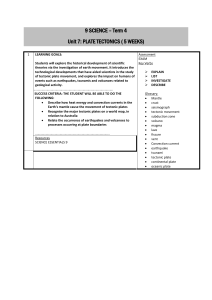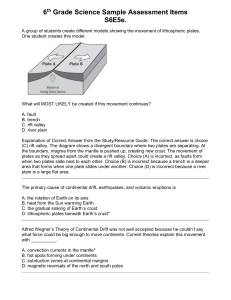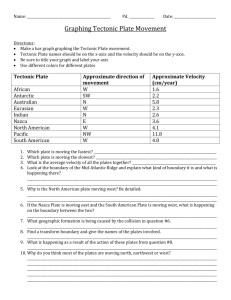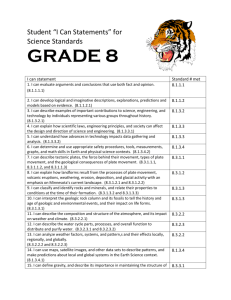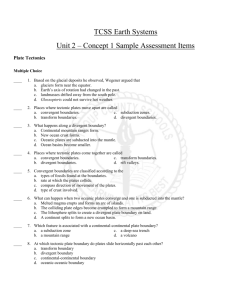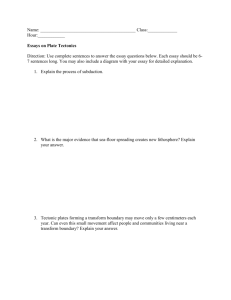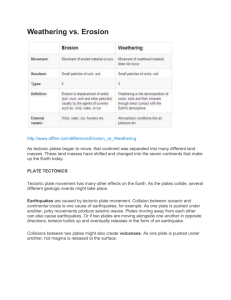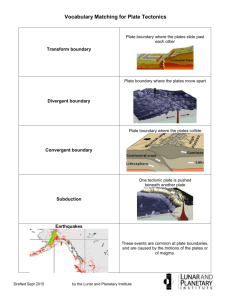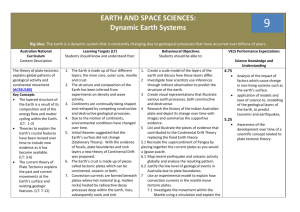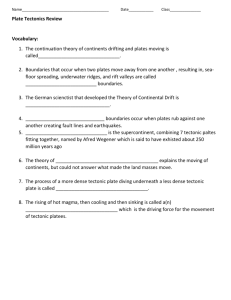Tectonic Plate Boundaries (Unit Review Activity)
advertisement
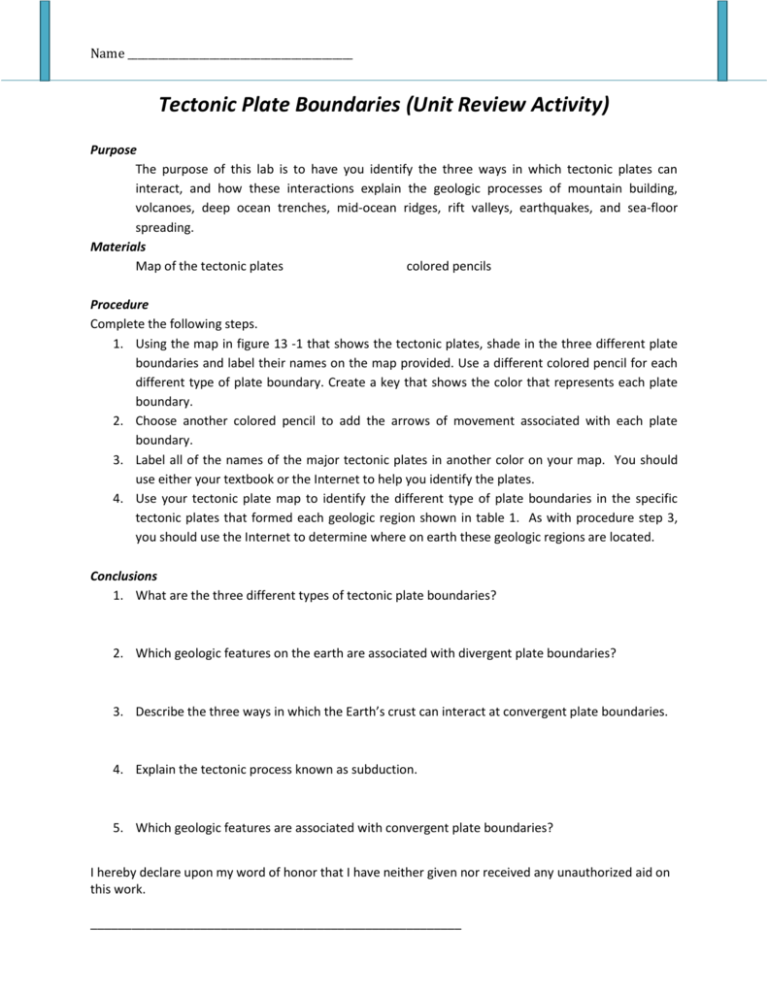
Name ____________________________________________ Tectonic Plate Boundaries (Unit Review Activity) Purpose The purpose of this lab is to have you identify the three ways in which tectonic plates can interact, and how these interactions explain the geologic processes of mountain building, volcanoes, deep ocean trenches, mid-ocean ridges, rift valleys, earthquakes, and sea-floor spreading. Materials Map of the tectonic plates colored pencils Procedure Complete the following steps. 1. Using the map in figure 13 -1 that shows the tectonic plates, shade in the three different plate boundaries and label their names on the map provided. Use a different colored pencil for each different type of plate boundary. Create a key that shows the color that represents each plate boundary. 2. Choose another colored pencil to add the arrows of movement associated with each plate boundary. 3. Label all of the names of the major tectonic plates in another color on your map. You should use either your textbook or the Internet to help you identify the plates. 4. Use your tectonic plate map to identify the different type of plate boundaries in the specific tectonic plates that formed each geologic region shown in table 1. As with procedure step 3, you should use the Internet to determine where on earth these geologic regions are located. Conclusions 1. What are the three different types of tectonic plate boundaries? 2. Which geologic features on the earth are associated with divergent plate boundaries? 3. Describe the three ways in which the Earth’s crust can interact at convergent plate boundaries. 4. Explain the tectonic process known as subduction. 5. Which geologic features are associated with convergent plate boundaries? I hereby declare upon my word of honor that I have neither given nor received any unauthorized aid on this work. ______________________________________________________ Name ____________________________________________ 2013 6. Describe the interactions of tectonic plates around a transform fault boundary. 7. What geologic feature is associated with a transform fault boundary in the United States? Geologic Region Mid Atlantic Ridge Torga Trench East African Rift Peru-Chili Trench East Pacific Ridge Mariana Trench San Andreas Fault Himalaya Mountains Andes Mountains Cascade Mountains Aleutian Trench Mount St. Helens 2 Table 1: Geologic Plate Boundaries Type of Plate Boundary Tectonic Plates Associated with the Boundary
